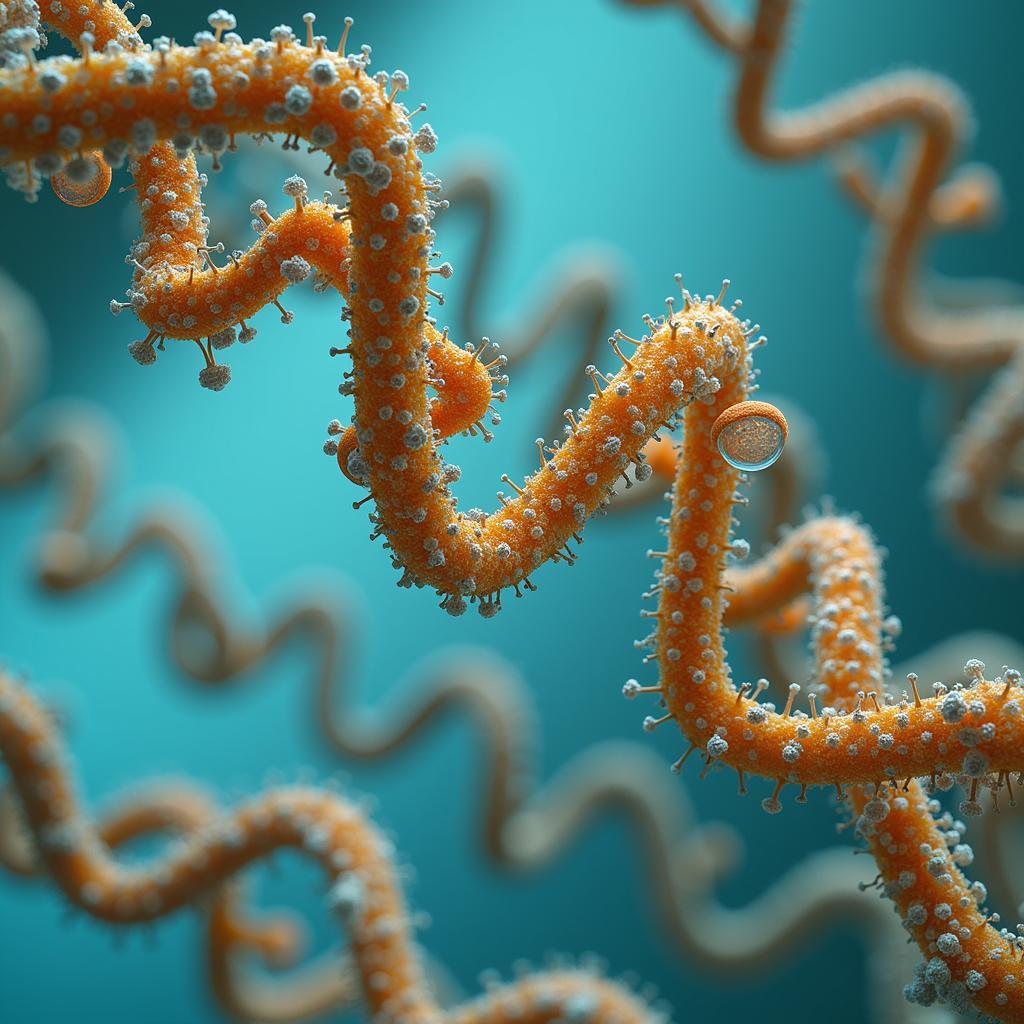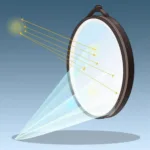The fascinating color change of iodine in the presence of starch is a common occurrence in science labs and even kitchens. But why does iodine change color in starch? This seemingly simple question unlocks a world of chemical interactions and structural complexities that are fundamental to understanding both iodine and starch.
The Science Behind the Color Change
The color shift from the characteristic yellowish-brown of iodine to a deep blue-black indicates the presence of starch. This transformation isn’t a chemical reaction in the traditional sense of forming new molecules. Instead, it’s a physical change resulting from the unique structure of starch and its interaction with iodine molecules.
Starch is composed of two types of polysaccharides: amylose and amylopectin. Amylose, a linear chain of glucose units, forms a helical structure. It’s within this helical structure that the magic happens. Iodine molecules (I2) fit snugly inside the amylose helix, forming a complex called a polyiodide complex. This interaction alters the way light is absorbed and reflected, leading to the dramatic color change.
 Iodine-Starch Interaction: Iodine Molecules within Amylose Helix
Iodine-Starch Interaction: Iodine Molecules within Amylose Helix
The Role of Amylose and Amylopectin
While amylose plays the primary role in the color change, amylopectin, the branched component of starch, also contributes to a lesser extent. Amylopectin has a more complex structure, and while it can bind with iodine, it doesn’t create the same intense blue-black color. Instead, it contributes a reddish-purple hue, which is often masked by the dominant blue-black from amylose. The intensity of the color depends on the proportion of amylose to amylopectin in the starch sample.
Practical Applications of the Iodine-Starch Test
This unique interaction has numerous practical applications. It’s a widely used test in various fields:
- Food Science: Detecting starch content in food products.
- Biology: Identifying starch storage in plants.
- Chemistry: As an indicator in titration reactions.
- Forensics: Detecting counterfeit currency.
 Practical Applications of the Iodine-Starch Test in Various Fields
Practical Applications of the Iodine-Starch Test in Various Fields
Why Doesn’t Iodine Change Color with Other Carbohydrates?
The specificity of the iodine-starch test arises from the unique helical structure of amylose. Other carbohydrates, even those closely related to starch, lack this specific structure, and therefore, don’t form the polyiodide complex with iodine. This is why iodine doesn’t change color with cellulose or simple sugars like glucose or fructose. It’s this specificity that makes the iodine test a reliable indicator of starch.
Common Questions about Iodine and Starch
What color are vacuoles?
Vacuoles don’t have a specific color. Their appearance depends on the contents they store. Just like the color change in the iodine-starch test, color in biological structures is often related to their composition and interaction with other molecules. This relates to how color is perceived as a chemical or physical property. You can explore more about what color are vacuoles.
Is color a chemical or physical property?
The nature of color can be intriguing, and understanding this can deepen your appreciation for the iodine-starch reaction. For a detailed exploration of this, you can find more information at is color a chemical or physical property.
Conclusion
The color change of iodine in the presence of starch is a testament to the power of molecular interactions. This simple yet elegant phenomenon has far-reaching applications across diverse fields, highlighting the importance of understanding fundamental chemical principles. By understanding why iodine changes color in starch, we gain a deeper appreciation for the intricate world of chemistry and its influence on our everyday lives.
FAQ
- What is the specific component of starch responsible for the color change with iodine? Amylose
- What type of change occurs when iodine interacts with starch: chemical or physical? Physical
- What is the name of the complex formed between iodine and amylose? Polyiodide complex
- Name one practical application of the iodine-starch test. Testing starch content in food
- Why doesn’t iodine change color with cellulose? Cellulose lacks the helical structure of amylose
- What color does iodine turn in the presence of starch? Blue-black
- What contributes to the reddish-purple hue sometimes observed with the iodine-starch test? Amylopectin
For any assistance or further inquiries, please contact us at Phone: 0373298888, Email: [email protected], or visit our office at 86 Cau Giay, Hanoi. We have a 24/7 customer support team.

